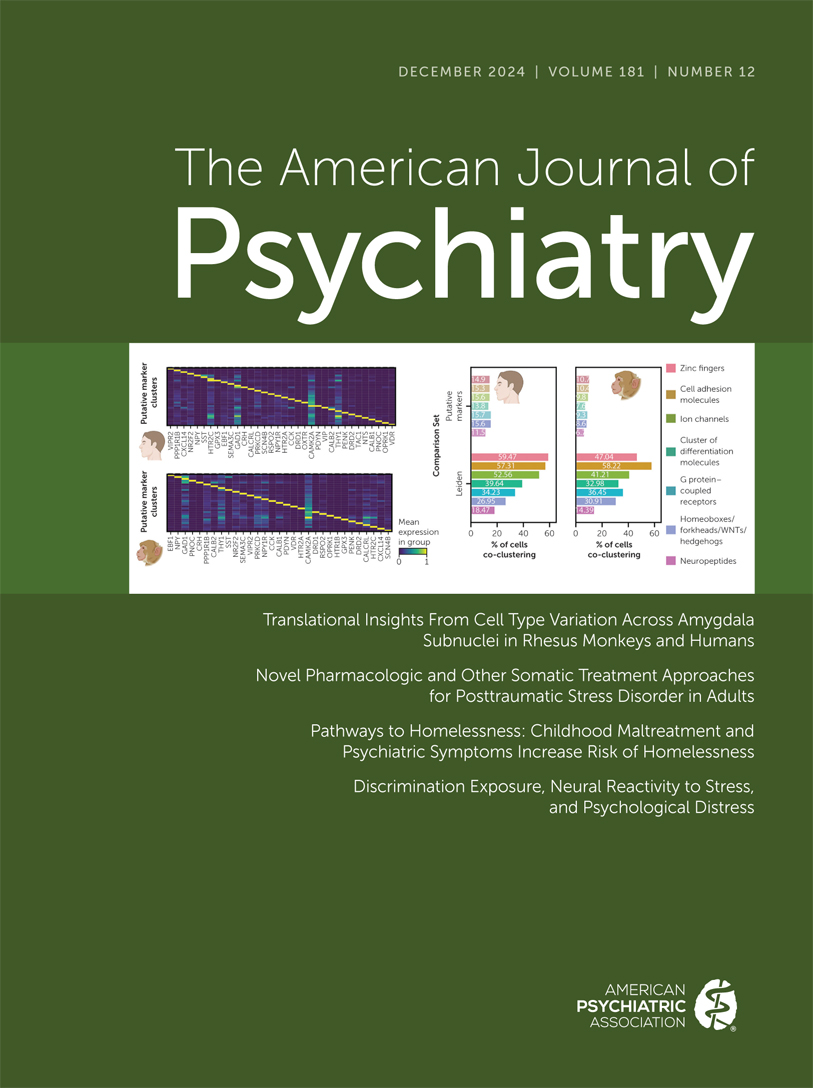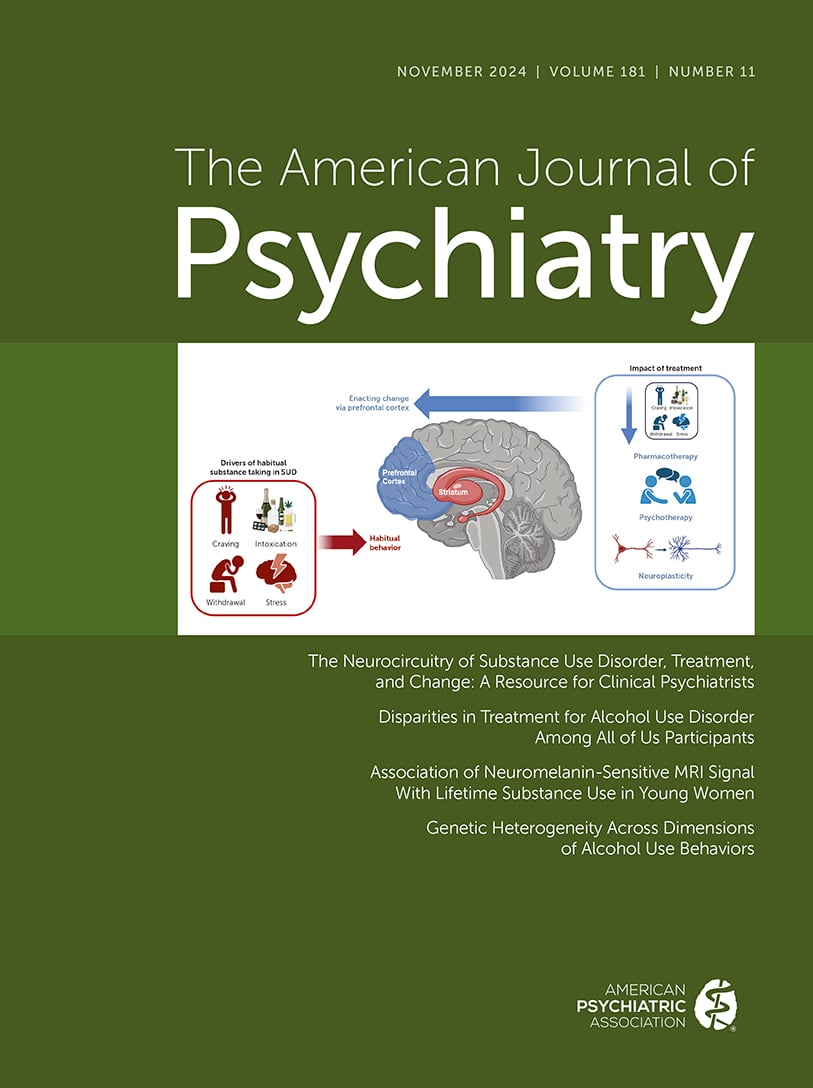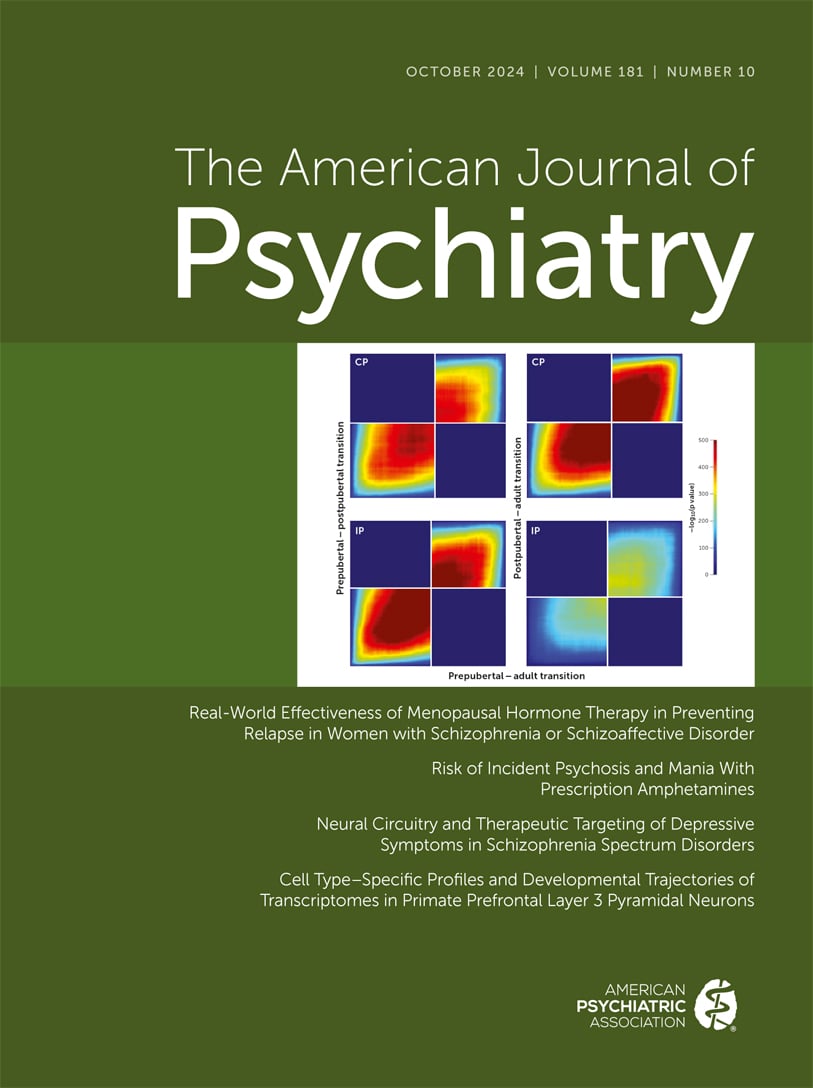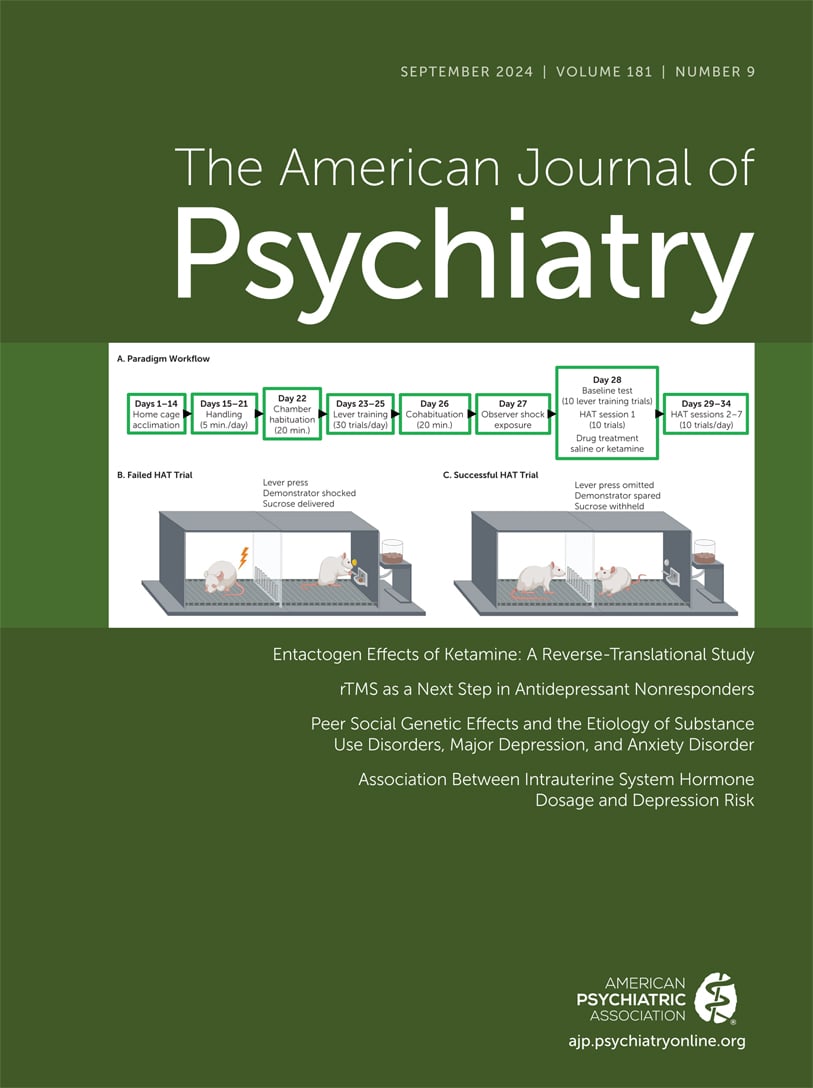American Journal of Psychiatry
- Volume 166
- Number 1
- January 2009
In This Issue
Editorial
Images in Neuroscience
Introspections
Treatment in Psychiatry
Clinical Case Conference
Images in Psychiatry
Reviews and Overviews
Publication date: 01 January 2009
Pages34–41Unlike most psychiatric diagnoses, posttraumatic stress disorder (PTSD) is defined in relation to a potentially etiologic event (the traumatic “stressor criterion”) that is fundamental to its conceptualization. The diagnosis of PTSD thus inherently ...
https://doi.org/10.1176/appi.ajp.2008.08050644Article
Publication date: 01 January 2009
Pages42–49Objective: The authors examined characteristics and predictors of response to placebo in all available reports of short-term randomized controlled trials of antidepressants for pediatric major depressive disorder. Method: ...
https://doi.org/10.1176/appi.ajp.2008.08020247Publication date: 01 January 2009
Pages50–57Objective: Cognitive reserve has been proposed as important in the etiology of neuropsychiatric disorders. However, tests of the association between premorbid IQ and adult mental disorders other than schizophrenia have been limited and ...
https://doi.org/10.1176/appi.ajp.2008.08030343Publication date: 01 January 2009
Pages58–63Objective: While there has been considerable concern over possible adverse effects of psychostimulants on brain development, this issue has not been examined in a prospective study. The authors sought to determine prospectively whether ...
https://doi.org/10.1176/appi.ajp.2008.08050781Publication date: 01 January 2009
Pages64–73Objective: Alterations in reward-related brain function and phenomenological aspects of positive affect are increasingly examined in the development of major depressive disorder. The authors tested differences in reward-related brain function ...
https://doi.org/10.1176/appi.ajp.2008.07081336Publication date: 01 January 2009
Pages74–82Objective: Volumetric abnormalities of basal ganglia have been associated with attention deficit hyperactivity disorder (ADHD), especially in boys. To specify localization of these abnormalities, large deformation diffeomorphic metric mapping (...
https://doi.org/10.1176/appi.ajp.2008.08030426Publication date: 01 January 2009
Pages83–94Objective: Among children, attention deficit hyperactivity disorder (ADHD) and conduct disorder are often comorbid and overlap clinically. Neuropsychological evidence suggests that children with conduct disorder demonstrate more prominent ...
https://doi.org/10.1176/appi.ajp.2008.08020212Publication date: 01 January 2009
Pages95–102Objective: Although early-onset conduct problems predict both psychiatric and health problems in adult life, little research has been done to index neural correlates of conduct problems. Emerging research suggests that a subgroup of children ...
https://doi.org/10.1176/appi.ajp.2008.07071050Publication date: 01 January 2009
Pages103–109Objective: A number of legal, social, and political factors over the past 40 years have led to the current epidemic of psychiatric disorders in the U.S. prison system. Although numerous investigations have reported substantially elevated rates ...
https://doi.org/10.1176/appi.ajp.2008.08030416Letters to the Editor
Book Forum
Corrections
Books Received
Past Issues
View Issues Archive
Vol. 181 | No. 12

Vol. 181 | No. 11

Vol. 181 | No. 10
